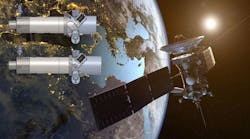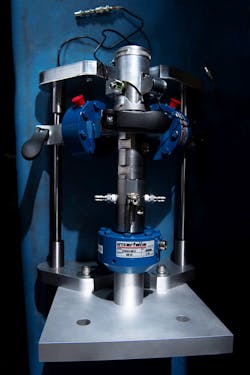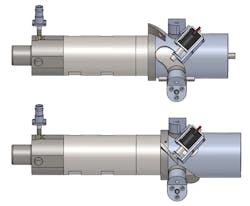First Restartable Rocket Motor to Maneuver Satellites in Space
Los Alamos researchers developed the first restartable motor for solid rockets. A motor built according to the patented design was restarted at least six times in succession. All other solid rocket motors in use provide a “one-and-done” firing for maneuvering in space.
This new technology will help solve the increasing problem of space traffic, as more small satellites (cubesats) are sent into orbit. The restartable motor will let satellites maneuver around other orbiting objects on short notice, preventing costly space crashes. A second high-priority defense application of this invention is missile maneuvering.
“Solid fuel-propelled missiles equipped with this technology will be able to perform several independent burns that will let them reach their targets through atypical non-ballistic flight paths,” says Ian Shelburne of Los Alamos’ High-Energy Science and Technology section.
Solid rockets are widely used rocket motors they are simple, low-cost and scalable. However, traditional solid rockets are limited to one burn of fixed impulse for maneuvering. The Los Alamos researchers overcame this limitation by designing a multi-burn solid rocket motor coupled with a re-usable ignition system.
“We developed an aerospike nozzle at Los Alamos with an actuated cowl,” says Nicholas Dallmann, lead research engineer. “Once a burn has given the missile the desired velocity change, the cowl rapidly opens, decompressing the chamber and extinguishing the burn. When another burn of the rocket is needed, the cowl resets to its original position.”
As part of the project, the researcher team also designed a safe, reusable ignition system that relies on electrolysis of water instead of volatile pressurized chemicals. This improves safety of material handling as well as the safety of any flight crew and the environment.
In the ignition, water is separated into hydrogen and oxygen through electrolysis. They get sent to a combustion chamber, where a spark ignites the gases. This can be done over and over for multiple burns.
This system is also stable for very long periods (multiple decades), which is ideal for the lifetime of space flight or storage of a missile.


